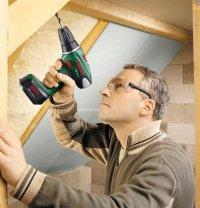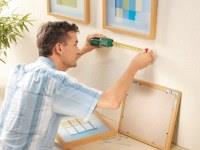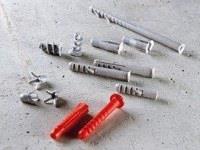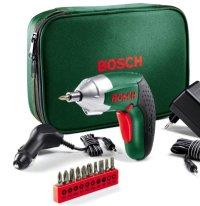
Solid walls are built form either concrete or brick. Any of the basic fixing methods can be used on these walls. Breeze block walls on the other hand, will need special fixing devices as they break easily, as will walls made from dry walling and plaster board.
Wall plugs and screw fixings
Wall plugs can be used for almost any household object, such as fixing a set of shelves to the wall or hanging up a picture. They are the most commonly used system for fixing ordinary household items to the wall. There are all sorts of different wall plugs, but they all require a hole to be drilled into the wall.
When using an electric drill be sure to press firmly as the bit bites into the wall. Always pull it in and out of the hole as you are drilling in order to get the dirt out of the hole and the process allows the bit to cool. When you are drilling through tiles in the kitchen or bathroom, put a piece of tape over the area to be drilled, to stop the tile from cracking and the drill from slipping.
The most common type of wall plug is made from plastic and can be purchased at any hardware shop. The plug should always be slightly longer than the lengths of the threads on the screws being used. The drilled hole should be about 3mm deeper than the length of the plug so that when the screw is fully tightened it does not penetrate the end. You can regulate the depth of the hole, by sticking a bit of tape at the appropriate length on the drill bit, so that you can see when it has been reached.
Always ensure that the shank of the screw does not enter the plug as this will weaken both the masonry as well as the fixing. The shank is the smooth part of the screw!
Masonry bolts
Masonry or anchor bolts are used where heavy, wooden load bearing frameworks are to be fixed to a wall and can be used on all types of solid masonry. A hole needs to be drilled to the diameter of the bolt. Try if at all possible, to avoid drilling into the cement between the bricks, as this is not as strong as drilling into the brick itself.
Hollow walls
In a lot of offices and newer homes the partition walls are made of plaster board, which has been nailed to timber supports. Special fixing devices are needed for these walls, as the ones used for brick walls would just fall out. If the correct screws are not used with each fixing, they are unlikely to perform properly and will eventually pull out of the wall.
The best way to fix things onto hollow walls is to find where the timber is by tapping along the wall. They are usually 300mm to 400mm apart and you will have found it when the tapping sound becomes dull and no longer sounds hollow. Once you have found it you can hammer in the nail straight into the wood and it will be strong enough to hold the object in place.
If, however, you need to put something on the wall that is not near a wooden beam, you will need to use special fixings for hollow walls. All fixings for hollow walls have one thing in common – they provide support behind the plasterboard when the screw has been tightened. The most popular of these is the metal toggle – a screw with a butterfly-type nut on it that can actually bend closed to fit through the hole. As soon as it is pushed through the wall, the toggle opens up and is pulled against the wall as the bolt is tightened up. Make sure you get this fixing method right the first time, because if you try to unscrew the bolt, the toggle will fall off the end and drop into the void in the wall and be lost forever.
If you are not sure which fixings to use, just have a word with the staff in your local hardware store and they will help you choose the correct fixing for the job. Using the correct tools and taking a few hints and tips, you can easily fix anything you need to, onto any wall in your home in no time at all. – Antonella Desi
Pictures courtesy of:
Bosch: www.bosch.co.za
Readers' CommentsHave a comment about this article. Email us now.












